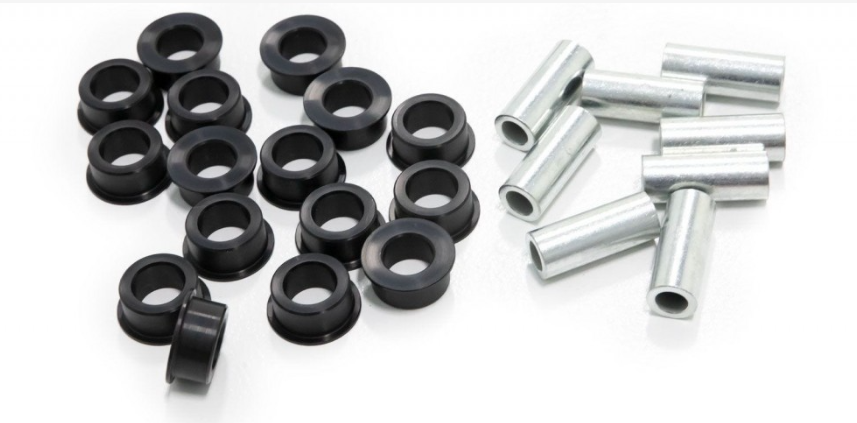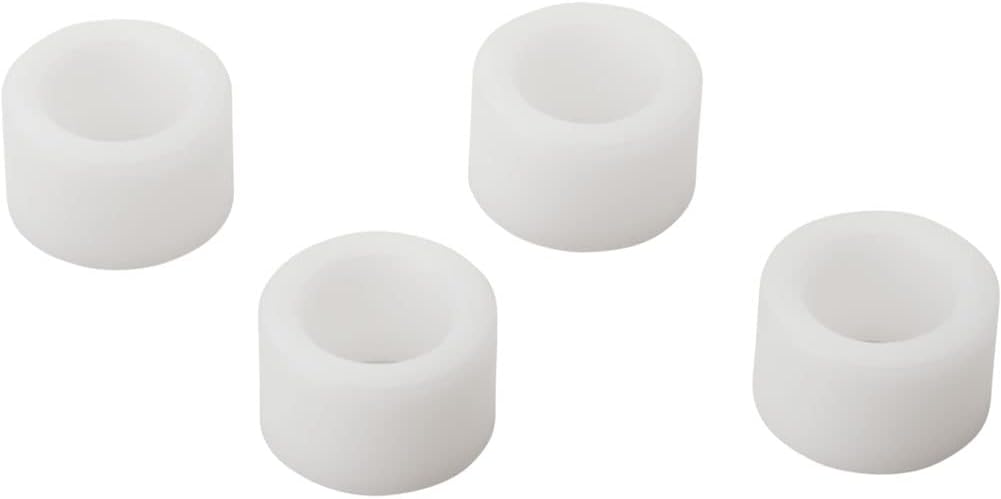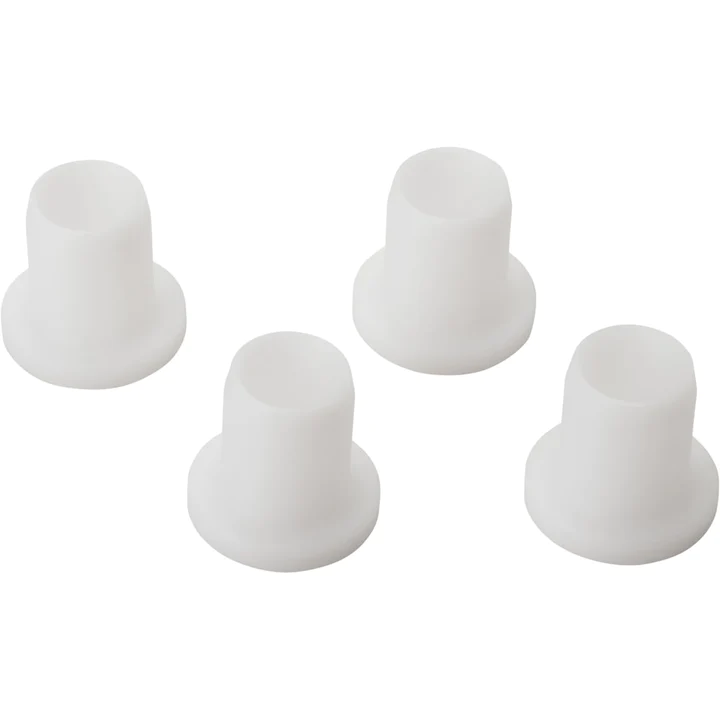
Can UHMW bushings reduce friction and noise levels in machinery?
Yes, UHMW (Ultra-High Molecular Weight Polyethylene) bushings can effectively reduce friction and noise levels in machinery. Here’s a detailed explanation:
UHMW is known for its excellent self-lubricating properties and low coefficient of friction, which make it an ideal material for reducing friction in machinery. When used as bushings, UHMW can provide the following benefits:
Friction Reduction:
UHMW bushings exhibit a low coefficient of friction, meaning they have a reduced tendency to stick or generate excessive resistance when in contact with other surfaces. The low friction characteristics of UHMW help to minimize the amount of energy required for the movement of machinery components, resulting in smoother operation and reduced frictional wear.
Noise Reduction:
UHMW bushings can contribute to noise reduction in machinery. The self-lubricating properties of UHMW reduce the occurrence of friction-induced vibrations and chatter between moving parts. By minimizing these sources of noise, UHMW bushings help create quieter operating conditions in machinery.
Vibration Damping:
UHMW has excellent vibration-damping properties. When used as bushings, it can help absorb and dampen vibrations generated during machinery operation. This can be particularly beneficial in applications where excessive vibrations can lead to equipment damage or affect the accuracy and performance of sensitive components.
Smooth Operation:
Due to its low friction characteristics, UHMW bushings enable smoother and more efficient operation of machinery. They help reduce the likelihood of jerky or uneven movements, ensuring smoother transitions and improved overall performance.
Wear Reduction:
UHMW bushings have excellent wear resistance, which helps to minimize wear and extend the service life of machinery components. The low friction properties of UHMW reduce abrasive interactions between the bushings and mating surfaces, resulting in reduced wear and the need for less frequent maintenance or replacement.
It’s important to note that while UHMW bushings can effectively reduce friction and noise levels, the specific performance will depend on factors such as the design of the machinery, the load and speed of operation, and the proper selection and installation of the UHMW bushings. Additionally, regular inspection and maintenance of the machinery, including proper lubrication and replacement of worn bushings, are essential to ensure continued performance and noise reduction.
In summary, UHMW bushings can significantly reduce friction and noise levels in machinery. Their low friction properties, vibration-damping capabilities, and wear resistance make them an excellent choice for applications where smooth operation, noise reduction, and extended component life are desired.

What are the maintenance and installation guidelines for UHMW bushings?
Maintenance and installation guidelines for UHMW (Ultra-High Molecular Weight Polyethylene) bushings are important to ensure their proper functioning and longevity. Here’s a detailed explanation:
1. Proper Handling:
Handle UHMW bushings with clean hands or gloves to prevent contamination. Avoid dropping or mishandling the bushings, as this can cause damage or deformations that may affect their performance.
2. Cleaning:
Regularly clean the UHMW bushings to remove dirt, debris, or contaminants that may accumulate over time. Use a mild detergent or a solution of water and soap to clean the bushings. Avoid using harsh chemicals or solvents that can degrade or damage the UHMW material.
3. Lubrication:
UHMW bushings have inherent self-lubricating properties, but in certain applications or operating conditions, additional lubrication may be necessary. Consult with the manufacturer or supplier for lubrication recommendations specific to your application. If lubrication is required, use lubricants compatible with UHMW and follow the recommended application methods and intervals.
4. Installation:
Follow proper installation procedures to ensure the correct fit and alignment of UHMW bushings. Consider the following guidelines:
- Ensure that the shaft or pivot surface is clean and free from burrs or sharp edges that could damage the bushing.
- Inspect the bushings for any visible defects or damage before installation. Do not install damaged bushings.
- Apply a controlled force or use appropriate tools to press or slide the UHMW bushings into position. Avoid excessive force that could cause deformation or stress concentration.
- Verify that the bushing is securely seated and properly aligned with the shaft or pivot. Check for smooth rotation or movement without binding or excessive play.
5. Monitoring:
Regularly inspect the UHMW bushings during operation to identify any signs of wear, damage, or degradation. This may include visual inspection, monitoring for unusual noise or vibration, or checking for changes in performance. If any issues are detected, address them promptly by replacing or repairing the bushings as necessary.
6. Environmental Considerations:
Take into account the environmental conditions in which the UHMW bushings operate. Extreme temperatures, exposure to chemicals, UV radiation, or other factors can impact the performance and durability of the bushings. If the operating conditions deviate significantly from the recommended range, consult with the manufacturer or supplier for guidance on appropriate measures to mitigate potential issues.
7. Manufacturer’s Guidelines:
Always refer to the manufacturer’s guidelines, recommendations, and technical documentation for specific maintenance and installation instructions related to the UHMW bushings. They can provide valuable information and insights tailored to the particular product and application.
In summary, proper maintenance and installation guidelines for UHMW bushings involve handling with care, regular cleaning, appropriate lubrication if necessary, following proper installation procedures, monitoring for wear or damage, considering environmental factors, and referring to the manufacturer’s guidelines. By adhering to these guidelines, you can ensure the optimal performance, longevity, and reliability of UHMW bushings in your application.

How do UHMW bushings compare to other types of bearing materials?
When comparing UHMW (Ultra-High Molecular Weight Polyethylene) bushings to other types of bearing materials, several factors come into play. Here’s a detailed comparison:
1. Friction and Wear:
UHMW bushings have a low coefficient of friction, resulting in reduced friction and wear. Compared to materials like metal or bronze, UHMW bushings offer superior self-lubricating properties, which reduce the need for additional lubrication. This self-lubricating feature minimizes friction, wear, and the associated maintenance requirements.
2. Load Capacity:
UHMW bushings have excellent load-bearing capabilities, particularly under high-load conditions. They can distribute the load evenly, reducing stress concentrations and minimizing the risk of premature wear or failure. However, certain metals like bronze or steel may have higher load capacities in specific applications.
3. Wear Resistance:
UHMW bushings exhibit excellent wear resistance, making them suitable for applications involving repetitive sliding or rubbing motions. They can withstand continuous use without experiencing significant wear. Materials such as bronze or steel may also offer good wear resistance, but UHMW bushings often outperform them in applications requiring low friction and self-lubrication.
4. Chemical Resistance:
UHMW bushings have high resistance to a wide range of chemicals, acids, solvents, and corrosive substances. This chemical resistance protects the bushings from degradation, making them ideal for applications in harsh environments. In comparison, metals like steel or bronze may be susceptible to corrosion or chemical attack.
5. Impact Strength:
UHMW bushings have excellent impact strength, allowing them to withstand high loads and absorb shocks effectively. They can handle heavy-duty applications and resist deformation or failure even under significant impact forces. Other materials like bronze or steel may have varying levels of impact strength depending on their composition.
6. Temperature Resistance:
UHMW bushings have good temperature resistance, maintaining their properties over a wide temperature range. They can withstand both low and high temperatures without significant dimensional changes or loss of performance. In contrast, certain metals may have higher temperature tolerances but may exhibit thermal expansion or contraction.
7. Machinability:
UHMW bushings are relatively easy to machine, allowing for the creation of bushings with precise dimensions and tolerances. However, metals like bronze or steel can offer greater machining versatility and precision due to their inherent properties.
8. Cost:
UHMW bushings are generally cost-effective compared to many other bearing materials. They offer a long service life, reduced maintenance requirements, and resistance to wear and tear, contributing to overall cost savings. Metals like bronze or steel may have higher upfront costs but can be more economical in certain high-load or extreme temperature applications.
It’s important to note that the suitability of a bearing material depends on the specific application requirements. Factors such as load magnitude, speed, temperature, environment, and lubrication conditions should be considered when selecting the most appropriate bearing material.
In summary, UHMW bushings offer advantages in terms of low friction, self-lubrication, wear resistance, chemical resistance, impact strength, and cost-effectiveness. However, other materials like metals (e.g., bronze or steel) may excel in certain areas such as load capacity, temperature tolerance, or precision machining. Ultimately, the choice of bearing material should be based on a thorough evaluation of the application’s needs and the specific properties offered by each material.


editor by CX 2024-02-20